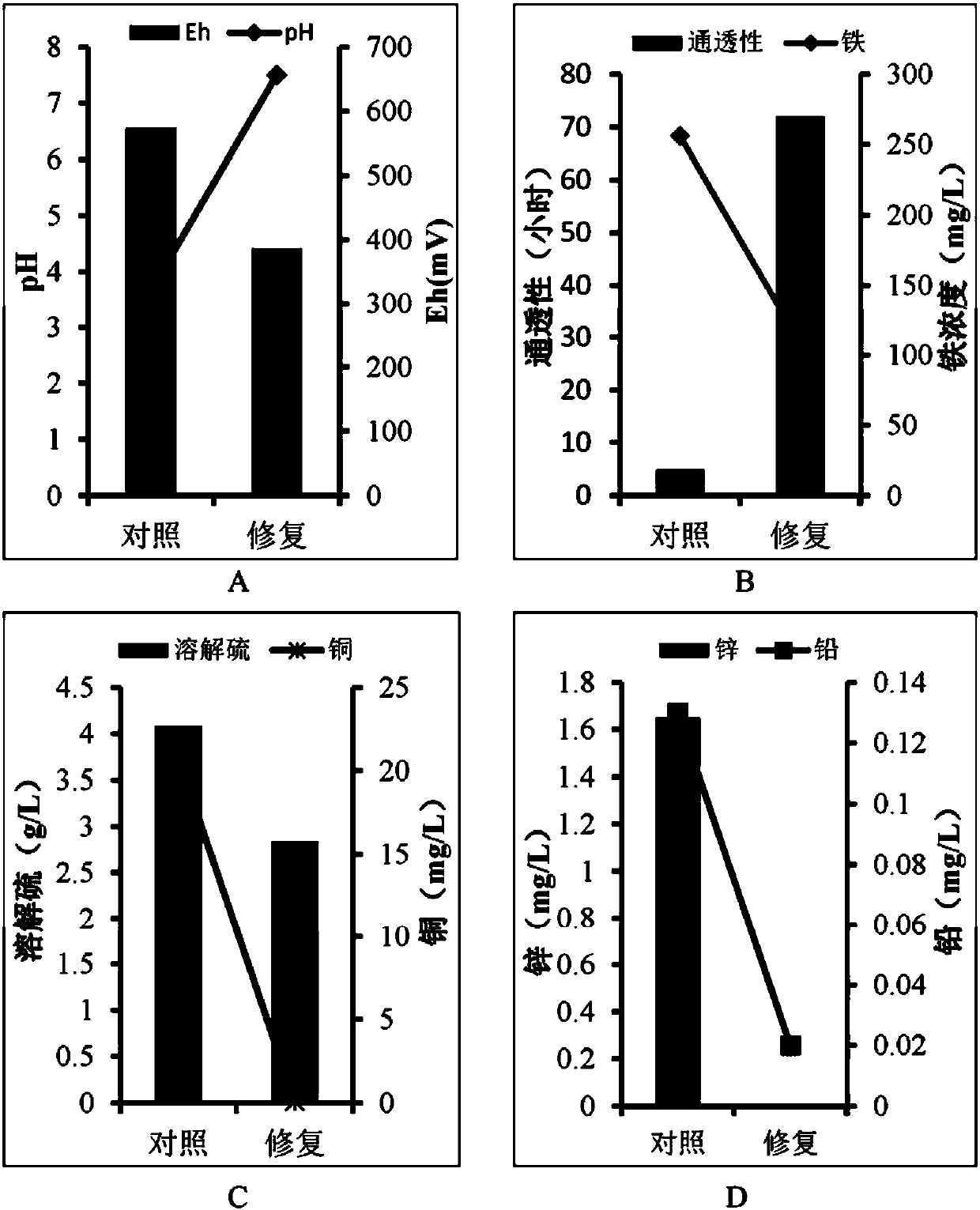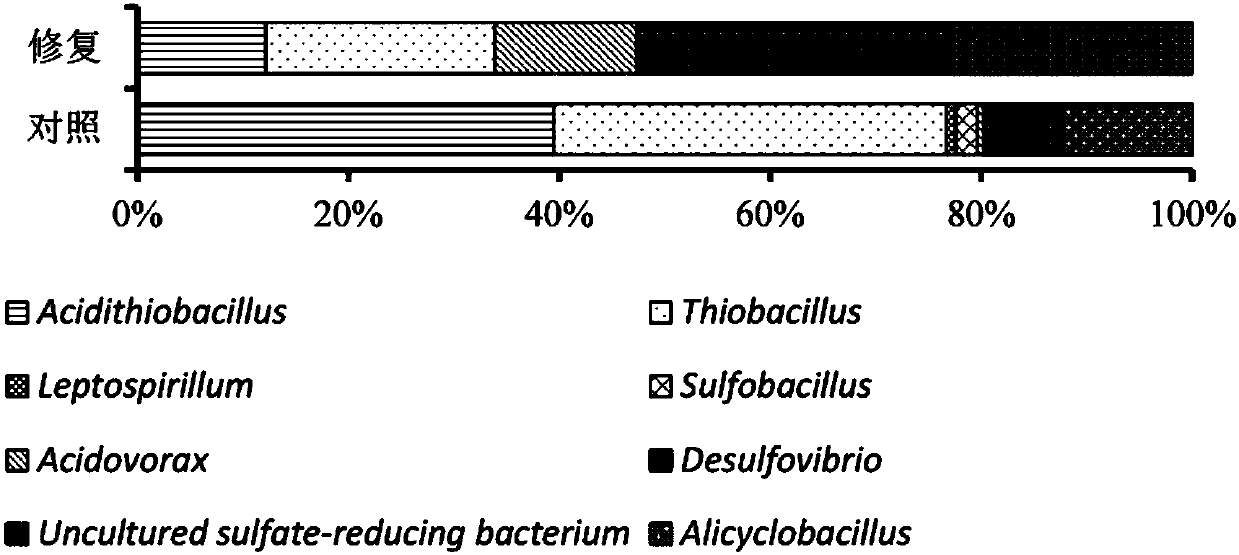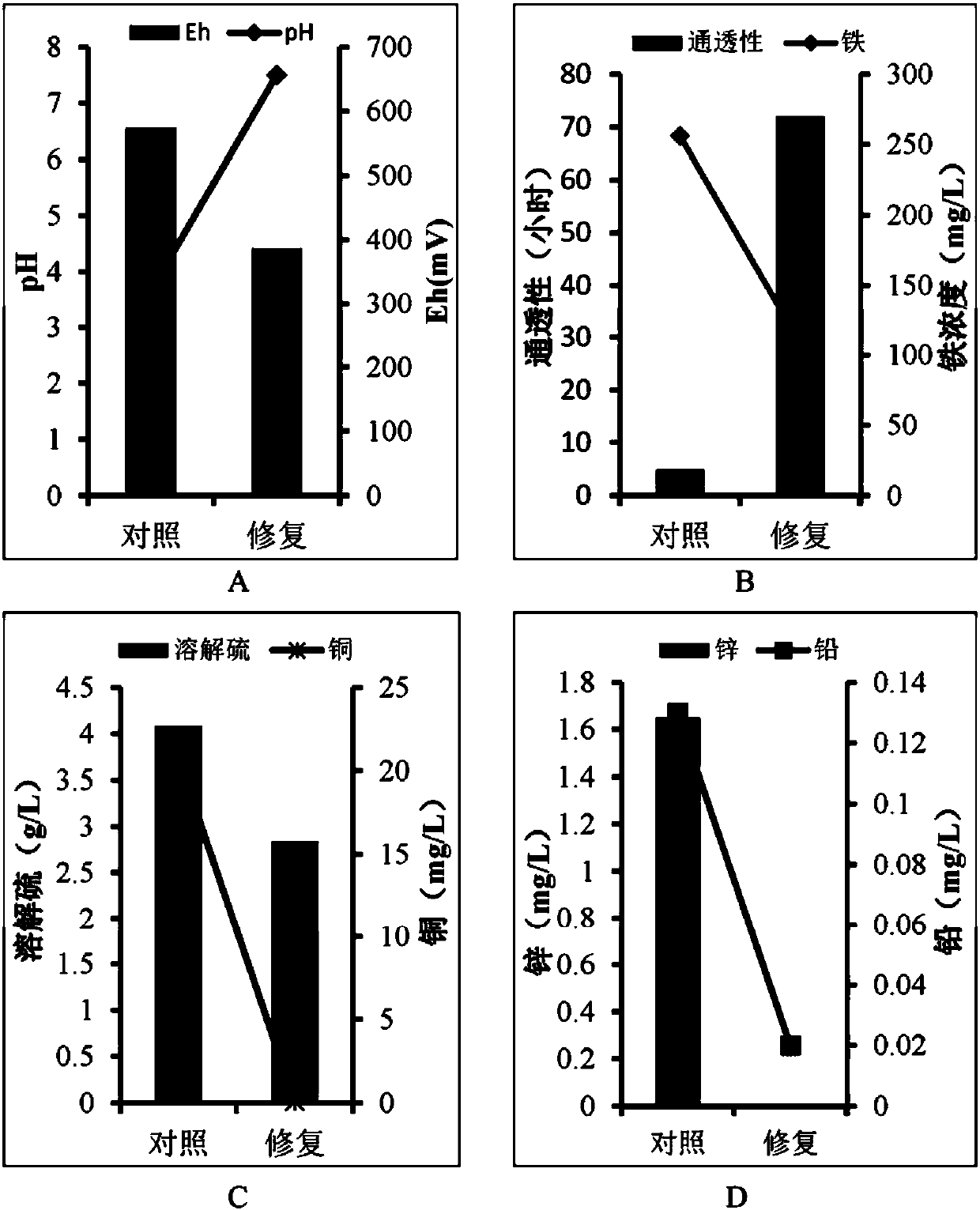Microbial remediation method for tailing pond heavy metal pollution
A technology for microbial remediation and heavy metals, applied in the field of bioremediation, can solve the problems of difficult application of heavy metal pollution sites, easy to change soil properties, and plant yield reduction, etc. Effect
- Summary
- Abstract
- Description
- Claims
- Application Information
AI Technical Summary
Problems solved by technology
Method used
Image
Examples
Embodiment 1
[0034] EXAMPLE 1 Lab-Scale Restoration
[0035] The experiment was set up in the restoration group and the control group. In the restoration group, 120L of the mixed culture solution of sulfate-reducing bacteria EM2, SRB-4 and iron-ion-reducing 7 CFU / mL) was sprayed on the surface of about 0.5 tons of tailings, while the control group was only sprayed with an equal volume of water. The two groups were placed in an environment of 30°C for 60 days, the exudate was collected, and finally the physical, chemical and microbiological tests were carried out.
[0036] The pH value and redox potential value of the seepage were measured with a pH meter and redox potential electrode, and the seepage was filtered with an ultrafiltration membrane (pore size 0.2 μM) and analyzed for soluble elements by ICP-OES technology.
[0037] Analysis of microbial population structure by high-throughput sequencing. The samples to be tested were collected by centrifugation, and the whole genome DNA of ...
PUM
 Login to View More
Login to View More Abstract
Description
Claims
Application Information
 Login to View More
Login to View More - R&D
- Intellectual Property
- Life Sciences
- Materials
- Tech Scout
- Unparalleled Data Quality
- Higher Quality Content
- 60% Fewer Hallucinations
Browse by: Latest US Patents, China's latest patents, Technical Efficacy Thesaurus, Application Domain, Technology Topic, Popular Technical Reports.
© 2025 PatSnap. All rights reserved.Legal|Privacy policy|Modern Slavery Act Transparency Statement|Sitemap|About US| Contact US: help@patsnap.com



